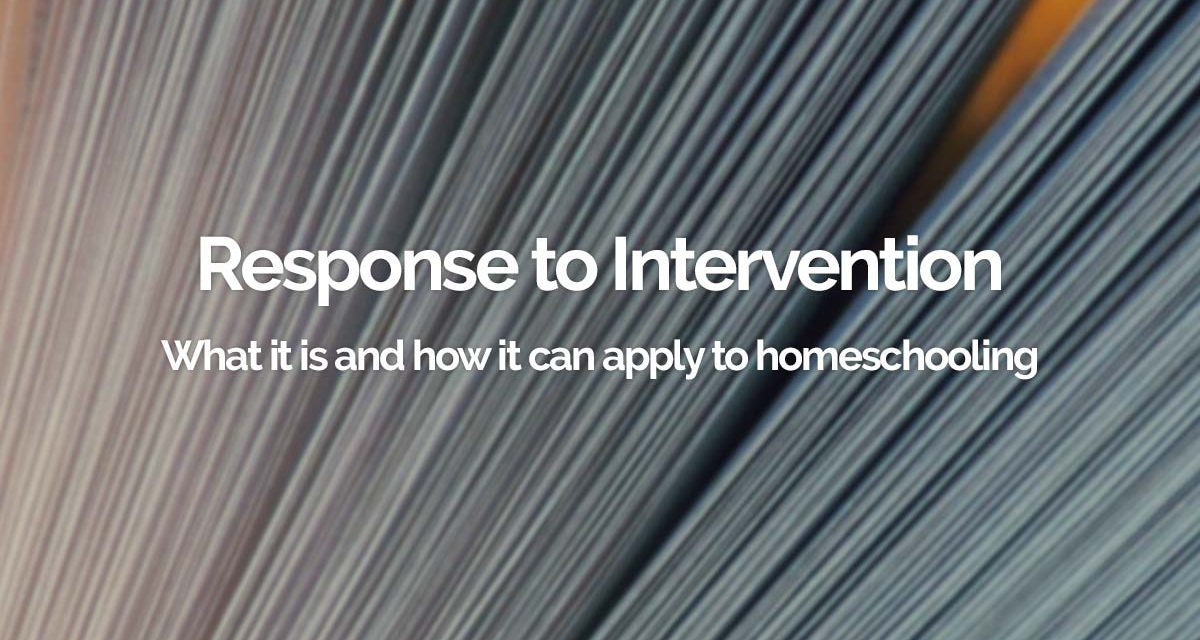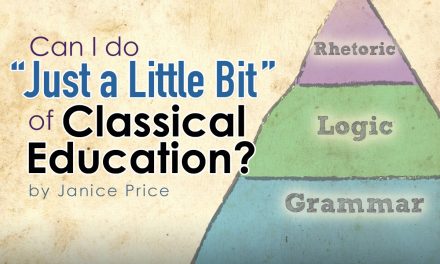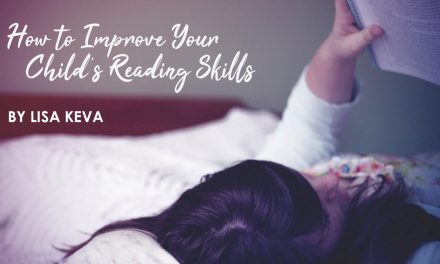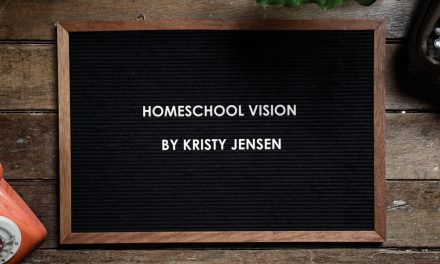Welcome to my new series where we take some public school lingo and approaches and see if there are helpful nuggets you can use in your homeschooling! Before you change the station, please hear me out. Typically speaking, education trends come about because there is a need not being met. It does happen that sometimes the execution of these new processes is not as effective as one would have hoped (a la No Child Left Behind – which was a noble idea, but poorly funded). However, other ideas are solid and helpful to kids and parents in the home situation. I taught big kids back in the day (high school French) where I was not as affected by things like Common Core standards as other teachers were, but I do have several teacher friends who provide me with news from the belly of the beast. Today let’s look at RTI. This stands for Response to Intervention and I think there are some good take-aways here.
First let’s look at what is RTI, and then we’ll see how it can be used effectively in the home environment. The goal of RTI is to prevent academic failure in school and ensure students have the support they need to then enter the world of work/career training/college. This doesn’t sound new to me. Educators have always wanted this for their students. RTI provides a new structure for directing extra instruction where it is needed. There is an assessment 3 times a year. Based on the results, students fall into a tiered system of getting help where they need it. An intervention is what they call the period of focused study. Tier 1 is done with the entire class and can last up to 8 weeks. Teachers screen the students the whole time. This is a group intervention that targets math, reading and behavior. At the end of the period, those who pass an assessment return to their regular classroom dynamic, while some individuals may be sent on to tier 2. Tier 2 is for those kids not making progress in tier 1. There is usually a small group dynamic where intense instruction can be tailored to their performance level (aka abilities.) This tier can take longer, but should not exceed a grading period (9 weeks). Students who continue to show too little progress on their assessments are then considered for tier 3. Tier 3 is your individualized student intervention that targets their specific academic deficiency (that sounds harsh, but when a child still doesn’t get it, this is something to help them in a one-on-one setting.) These individuals may be eligible for special education services under the Individuals with Disabilities Act of 2004 (IDEA 2004). Data collected during their RTIs are used to make such a decision.
So, homeschoolers, summer is a time often used to hit those areas that your child did not quite master during the school year. Usually, you might get a workbook and have them do a page or 2 a day during summer vacation (assuming you are following a traditional school year calendar.) But how do you know that this little workbook is doing what you want it to? How can you prove that your tool of choice was effective? Perhaps RTI has something to help you here. Consider the 3 times a year assessment done with RTI. You could create a pre-test, mid-term and post-test to be given over the summer (or even over a month.) Determine what exactly they are missing. Choose wisely. It should be a skill necessary going into the next level of their math or reading. For example, in math it might be multiplication or fractions, or in Language Arts, maybe studying root words for vocabulary and spelling improvement. Once you choose your goal, come up with a 10 point quiz that requires your student to demonstrate their knowledge. You can pull sentences/problems from a workbook or from your head. Use this same test 3 times over the summer. Scores should show growth (aka improvement.) If they don’t, then perhaps your resource of choice did not achieve your goal and that tells you to try something different. Perhaps you should try a different method, like an audio or hands-on component rather than a workbook, to teach the concept. Trying something different would be like moving your student to Tier 2 of an RTI. (The workbook was Tier 1.) There should be some sort of performance assessment at Tier 2, but maybe not a written quiz. Maybe your child could come up with 5 math problems to solve themselves, or write a paragraph using some new vocabulary words in context. Tier 3 at home is tricky. I mean, you are already doing the one-on-one part. Perhaps it becomes a matter of time spent on the intervention. Instead of a 15 minute a day intervention, it becomes an hour a day until the projected level of proficiency is achieved (In other words: keep going until they’ve got it!)
Why not take advantage of the research that has been done for you? There are usually some really good little ditties among the data that you can learn from and apply in your homeschooling endeavor.
If there are other ‘school’ concepts or terms you would like translated for you, feel free to submit them in the comments below.





